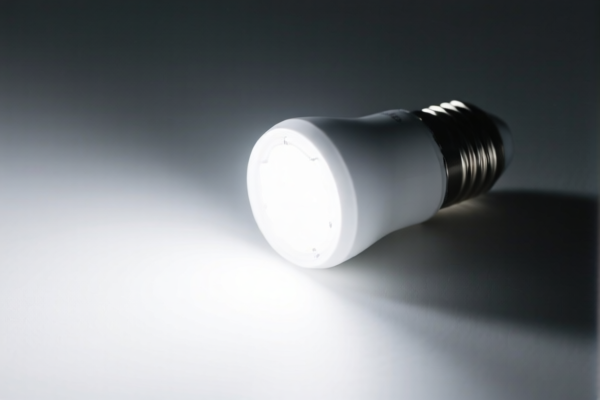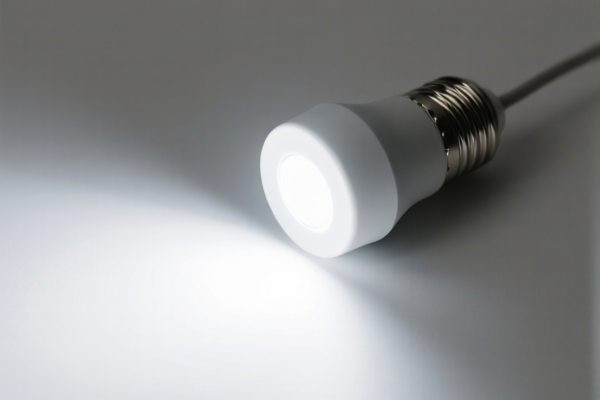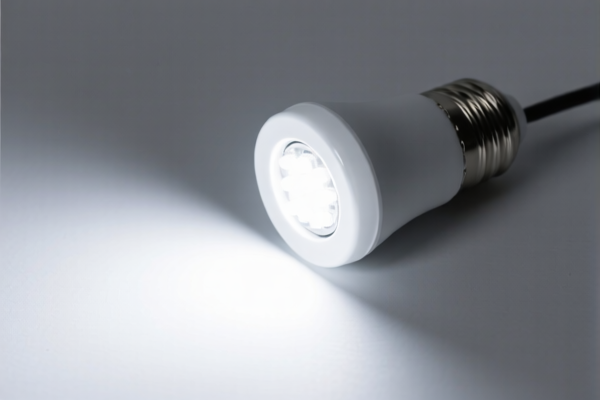| HS Code | Official Doc | Tariff Rate | Origin | Destination | Effective Date |
|---|---|---|---|---|---|
| 8539520010 | Doc | 32.0% | CN | US | 2025-05-12 |
| 8539520091 | Doc | 32.0% | CN | US | 2025-05-12 |
| 8512904000 | Doc | 55.0% | CN | US | 2025-05-12 |
| 8512906000 | Doc | 55.0% | CN | US | 2025-05-12 |
| 9405416000 | Doc | 61.0% | CN | US | 2025-05-12 |
| 9405416000 | Doc | 61.0% | CN | US | 2025-05-12 |




LED Light Bulb
An LED light bulb (Light Emitting Diode bulb) is a solid-state lighting device that uses light-emitting diodes to produce light. It is a significantly more energy-efficient alternative to incandescent and fluorescent lighting.
Material
The core component is the light-emitting diode (LED) chip, typically made from semiconductor materials like gallium arsenide, gallium phosphide, and indium nitride. These materials determine the color of light emitted. Other materials include:
- Heat Sink: Usually aluminum or plastic to dissipate heat generated by the LED. Effective heat management is crucial for longevity.
- Phosphor Coating: Often yttrium aluminum garnet (YAG) or similar compounds. This coating converts the blue light emitted by the LED chip into white light or other colors.
- Housing: Typically plastic or glass.
- Electronic Circuitry: Includes a driver circuit containing resistors, capacitors, and sometimes integrated circuits to regulate power and current.
Purpose
The primary purpose of an LED light bulb is to provide illumination for a wide range of applications, replacing traditional lighting technologies.
Function
LED bulbs function through the process of electroluminescence. When an electric current passes through the semiconductor material of the LED chip, energy is released in the form of photons (light). The color of light depends on the energy band gap of the semiconductor material. The driver circuit regulates the voltage and current supplied to the LED, ensuring stable and efficient operation.
Usage Scenarios
LED bulbs are used in a vast array of applications, including:
- Residential Lighting: Home lighting, including general illumination, task lighting, and accent lighting.
- Commercial Lighting: Offices, retail stores, hotels, and restaurants.
- Industrial Lighting: Warehouses, factories, and outdoor lighting.
- Automotive Lighting: Headlights, taillights, and interior lighting.
- Specialty Lighting: Street lights, traffic signals, signage, and decorative lighting.
- Portable Lighting: Flashlights, lanterns, and headlamps.
Common Types
- A-Series Bulbs: The most common shape, designed to replace traditional incandescent bulbs. (e.g., A19, A21)
- BR/PAR Bulbs: Reflector bulbs used for directional lighting. (e.g., BR30, PAR38)
- MR Bulbs: Multifaceted reflector bulbs used for accent lighting. (e.g., MR16)
- Candle Bulbs: Decorative bulbs shaped like flames. (e.g., C7, B10)
- Globe Bulbs: Round bulbs used for decorative and vanity lighting. (e.g., G25)
- Tube Bulbs: Used to replace fluorescent tubes. (e.g., T8, T10)
- Smart Bulbs: Bulbs with wireless connectivity, allowing remote control and customization.
- Color Changing Bulbs: Bulbs capable of emitting a range of colors, often controlled via smartphone apps.
Advantages
- Energy Efficiency: Significantly lower energy consumption compared to incandescent and fluorescent bulbs.
- Long Lifespan: Last much longer than traditional bulbs, reducing replacement frequency.
- Durability: More resistant to shock and vibration.
- Instant On/Off: Reach full brightness immediately.
- Low Heat Emission: Produce less heat, reducing cooling costs.
- Environmentally Friendly: Contain no mercury.
- Controllability: Easily dimmable and controllable with smart home systems.
Disadvantages
- Initial Cost: Generally more expensive than incandescent bulbs (although prices have decreased significantly).
- Heat Sensitivity: Performance can be affected by high temperatures (requires adequate heat sinking).
- Color Rendering: Early LEDs had poor color rendering, but newer models have improved significantly.
- Directionality: LEDs emit light in a specific direction, requiring diffusers or reflectors for omnidirectional lighting.
Electrical filament or discharge lamps, including sealed beam lamp units and ultraviolet or infrared lamps; arc lamps; light-emitting diode (LED) light sources; parts thereof are relevant to “led light bulb”. The following HS codes apply:
- 8539520010: This HS code covers Electrical filament or discharge lamps, including sealed beam lamp units and ultraviolet or infrared lamps; arc lamps; light-emitting diode (LED) light sources; parts thereof: Light-emitting diode (LED) light sources: Light-emitting diode (LED) lamps Of a type specified in statistical note 7(a) to this chapter. The first two digits (85) indicate the chapter for electrical machinery and equipment. The next four digits (3952) specify lamps and lighting fittings. The final two digits (0010) further refine this to LED lamps of a specific type. The total tax rate is 32.0%, comprised of a 2.0% base tariff, 0.0% additional tariff, and a 30.0% additional tariff effective after April 2, 2025.
- 8539520091: This HS code covers Electrical filament or discharge lamps, including sealed beam lamp units and ultraviolet or infrared lamps; arc lamps; light-emitting diode (LED) light sources; parts thereof: Light-emitting diode (LED) light sources: Light-emitting diode (LED) lamps Other. Similar to the previous code, 85 indicates electrical machinery, 3952 specifies lamps, and 0091 denotes other LED lamps. The total tax rate is also 32.0%, with a 2.0% base tariff, 0.0% additional tariff, and a 30.0% additional tariff effective after April 2, 2025.
Regarding HS codes 8539520010 and 8539520091, the distinction lies in whether the LED lamp is “Of a type specified in statistical note 7(a) to this chapter”. It is important to determine if your specific LED light bulb falls under this specification.
Customer Reviews
No reviews yet.